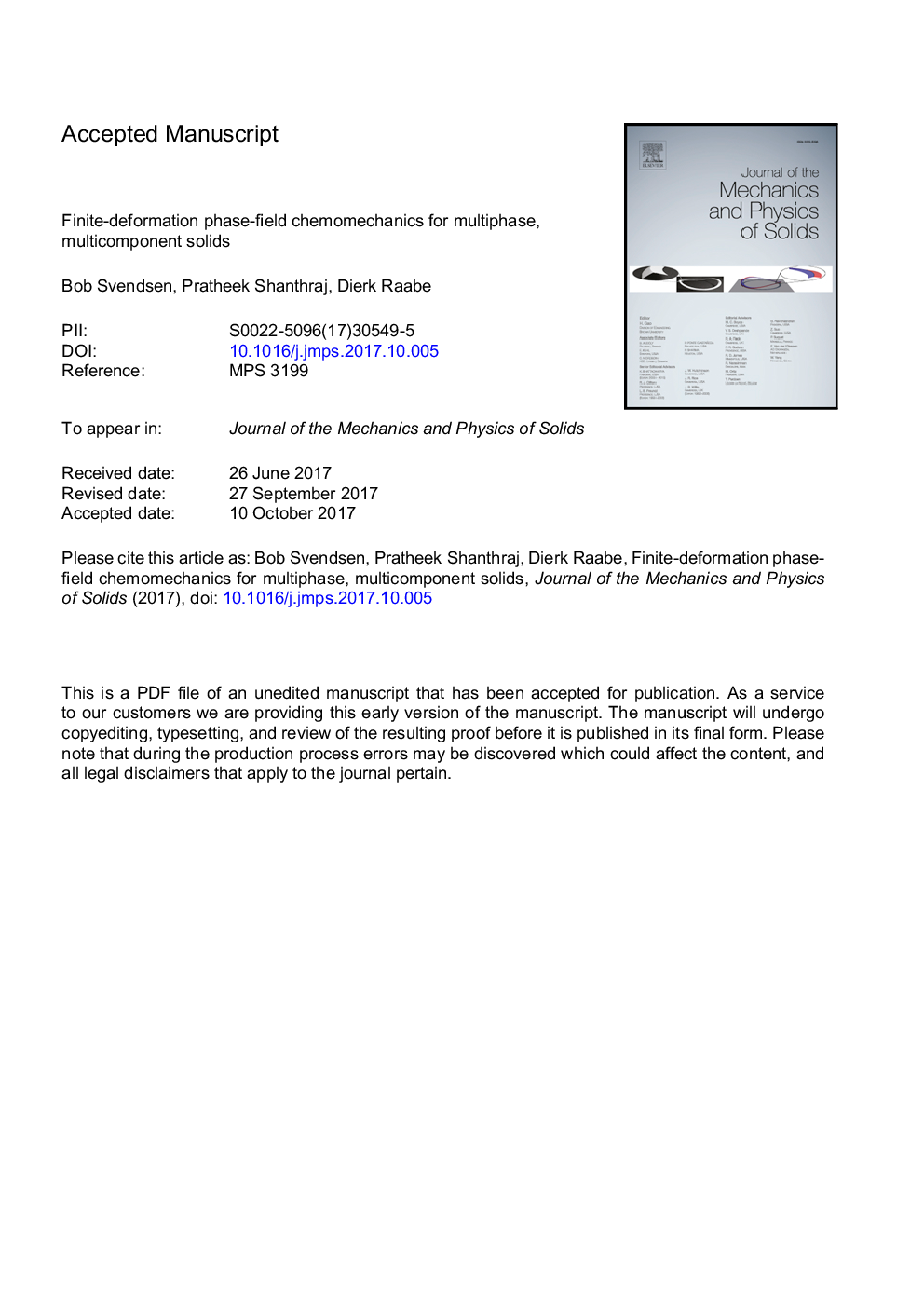| Article ID | Journal | Published Year | Pages | File Type |
|---|---|---|---|---|
| 7177535 | Journal of the Mechanics and Physics of Solids | 2018 | 36 Pages |
Abstract
The purpose of this work is the development of a framework for the formulation of geometrically non-linear inelastic chemomechanical models for a mixture of multiple chemical components diffusing among multiple transforming solid phases. The focus here is on general model formulation. No specific model or application is pursued in this work. To this end, basic balance and constitutive relations from non-equilibrium thermodynamics and continuum mixture theory are combined with a phase-field-based description of multicomponent solid phases and their interfaces. Solid phase modeling is based in particular on a chemomechanical free energy and stress relaxation via the evolution of phase-specific concentration fields, order-parameter fields (e.g., related to chemical ordering, structural ordering, or defects), and local internal variables. At the mixture level, differences or contrasts in phase composition and phase local deformation in phase interface regions are treated as mixture internal variables. In this context, various phase interface models are considered. In the equilibrium limit, phase contrasts in composition and local deformation in the phase interface region are determined via bulk energy minimization. On the chemical side, the equilibrium limit of the current model formulation reduces to a multicomponent, multiphase, generalization of existing two-phase binary alloy interface equilibrium conditions (e.g., KKS). On the mechanical side, the equilibrium limit of one interface model considered represents a multiphase generalization of Reuss-Sachs conditions from mechanical homogenization theory. Analogously, other interface models considered represent generalizations of interface equilibrium conditions consistent with laminate and sharp-interface theory. In the last part of the work, selected existing models are formulated within the current framework as special cases and discussed in detail.
Related Topics
Physical Sciences and Engineering
Engineering
Mechanical Engineering
Authors
Bob Svendsen, Pratheek Shanthraj, Dierk Raabe,
